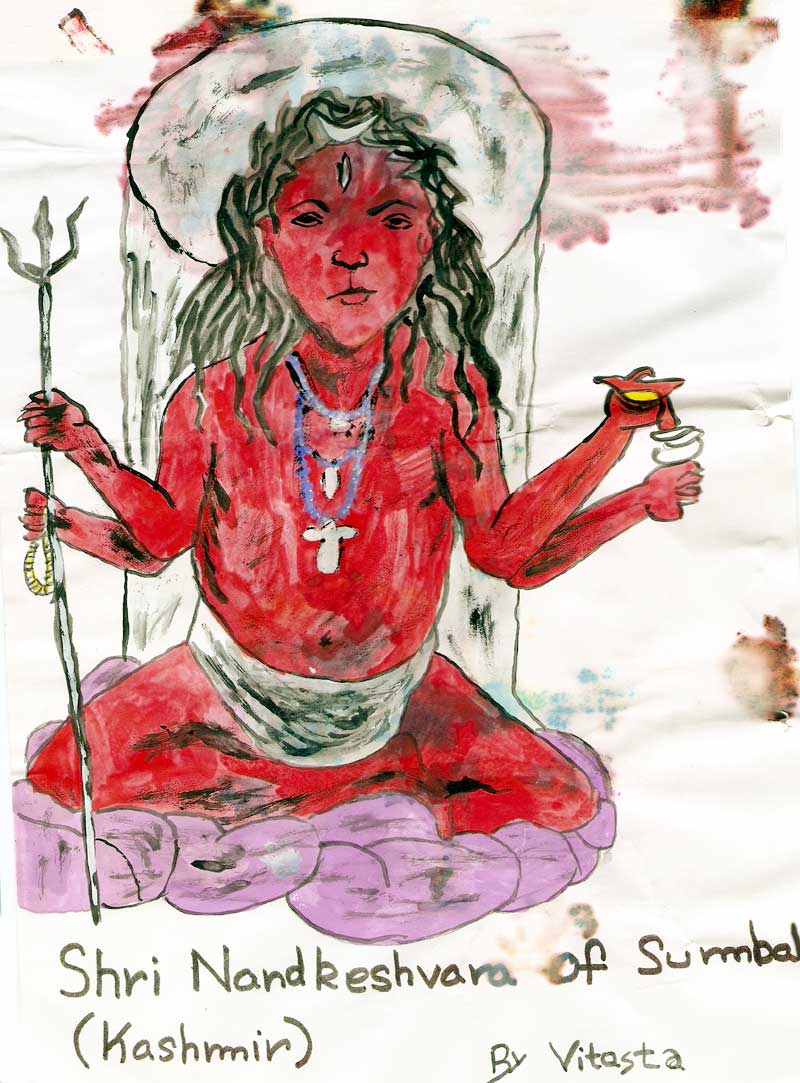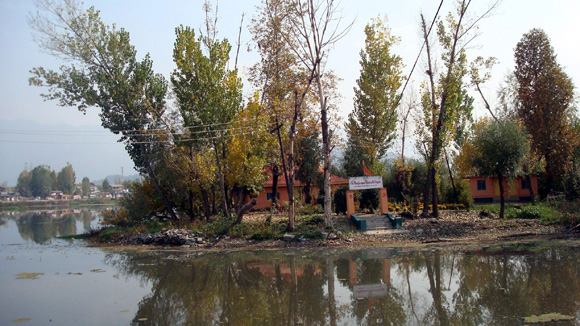 |
|
Ashta Bhairavas of Kashmir |
 Mongleshwar Bhairav Temple, Fateh Kadal, Srinagar (India) |
|
The
Ashta Bhairavas of Kashmir are said to be having their abode around the
sacred Chakreshvara at Sharika Parvat,popularly known as the Hari
Barbat.Hari Parbat is the hillock,said to be thrown as a pebble in the
Satisar--the sacred lake of Lord Shiva's eternal Shakti, by Sati
herself, who took the form of Sharika--'Ha'ir'in the Kashmiri
dialect.The whole description is described in the One Thousand Names of
Shri Sharika, revered as the Sharika Sahsranama. All the
Bijaksharas--seed syllables are adored as the Matrika forms of the
Divine Mother.Shri Chakreshvara--the king of all the Chakras, is with
Fifteen Bijaksharas of the Kadi Vidya, and also of the "Nafakoti Samavesha" of the Malini-Yijayottara Tantra.
The concept of Kashmiri word Bhairava has its deep roots in the Trika philosophy---Agama Shastras, Pratyabijnya Shastra and the Spanda Shastra.Bhairava is the explanation of the term Shiva, who is the ultimate Reality of this immanent world and transcendental understanding/reality. The Sanskrit Varna "Bha" stands for Bharana,which means to 'bear' any thing within,or Barun in Kashmiri language; "Ravan" means to cry, to roar and the Kashmiri wird Riwun, seems tob the Tadbhava of word 'Ravan ''Vaman" means to vomit or 'Womun' in Kashmiri. These three characters form the word Bhairava, but these are just the linguistic pattern of the word Bhiarava. Essentially, it is the nature of Shiva, who creates, sustains and dissolves the manifestation in His own being, at the time of pralaya/final dissolution. When some type of Puja is offered in the Kashmiri Pandit religious ethos,the followers offer Naivedya/Prasadam to the Ishta Devata and the Ishta Bhairava, the guardian deity of the area. These are:---
 Apart from these Ashta Bhairavas, there are Bhiravas, who are said to be the Deities of the Villages, among them Shri Nandakeshvara, of Sumbal is frequently visited by the devotees. Bhimareja Bhairava is the Bhairava of the Prayagraj Shadipura and Bhuteshvara is the Bhirava of the Tullamulla area. The devotees would pray to their "Iha-Rashtradipatis", as found in the Kashmiri Naivedya Mantra, with a handful of yellow rice, known as Taha'ir in Kashmiri. All the Sahsranamas related to the Kashmir Shaktivad, are related to the Bhairava. Nandakeshavara is the seeker, who wants to know the quintessentials behind Bhavani--the Creativity of the Divine Motherhood. Shri Sharika Sahsranama, Jwala sahsranama and Raginya Sahsranama also deal with the quintessence of the Mahamaya--Moola Prakriti, beingthe focus of the Bhairava. |
 Another view of ongleshwar Bhairav Temple, Fateh Kadal, Srinagar (India) |
Wednesday, June 6, 2018
Ashta Bhairavas of Kashmir
Subscribe to:
Post Comments (Atom)
No comments:
Post a Comment